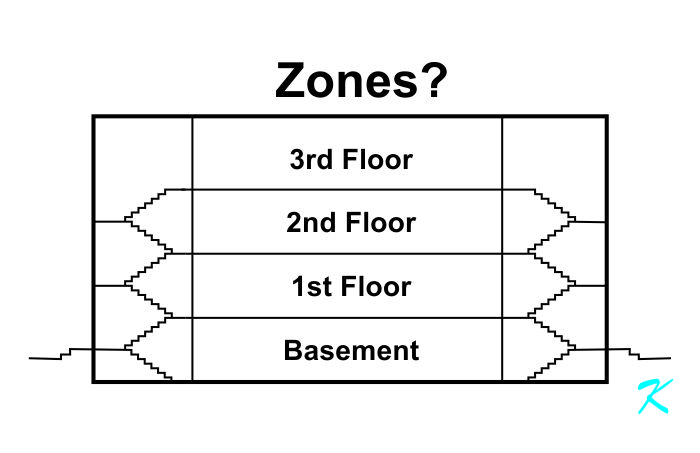Remember, though, that fire alarm installers like you and I aren't the ones to determine fire control zoning. Fire control zones are something that the responsible person, the one most concerned with fire-fighting and fire-safety (the fire marshal) decides.
Other Fire Alarm Zoning Considerations
Other factors in even a simple fire alarm system add more complication.
Verification
If the smoke detectors are verified, they need to be on separate fire alarm zones. Verification will delay alarms up to :30 seconds from devices like pull stations, heat detectors, and waterflow switches. For fire safety issues, any other devices like pull stations, heat detectors, and waterflow switches cannot have this verification delay.
Elevator
If there's an elevator, consult with the elevator company. You might even consider consulting with the elevator inspector, (the elevator company's AHJ or Authority Having Jurisdiction). There is always something extra to be concerned with, and knowing the extra issues ahead of time can help you in your fire alarm zoning decisions.
- Because the elevator capture smoke detectors can't be verified
- Because the rest of the building's fire alarm detectors, pull stations, and waterflow switches can't capture the elevator
- Because each elevator lobby's smoke detector and the elevator machine room smoke detector still capture the elevator three different ways (depending on which elevator smoke detector goes into alarm), and each of these detectors have to be shown on the annunciator display separately
- Because, if the elevator shaft and / or the elevator machine room is sprinklered, there has to be heat detectors included on a separate zone to shunt the elevator (turns off the power to the elevator so it stops where it's at)
- Because the fire alarm system has to send signals to the elevator controls using three or four different output control zones
Everything, each elevator capture smoke detector and each output relay that sends signals from the fire alarm control panel to the elevator control panel, has to be on their own separate zones.
Fire Alarm Zoning
If there's fire alarm zoning, the fire alarm zoning should match the fire control zoning. However, even on small fire alarm systems, there are always other issues to be concerned with. That's why, even with smaller fire alarm systems, there is a trend to move away from conventional fire alarm systems and towards addressable fire alarm systems. Conventional fire alarm systems just don't have the number of input zones and number of output zones that addressable fire alarm systems have.
Douglas Krantz
